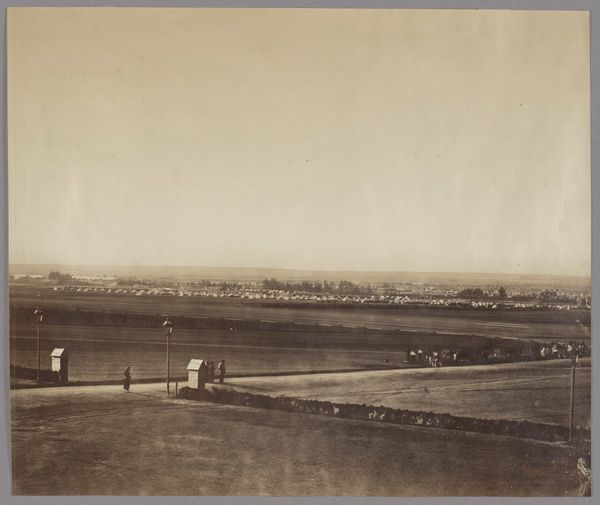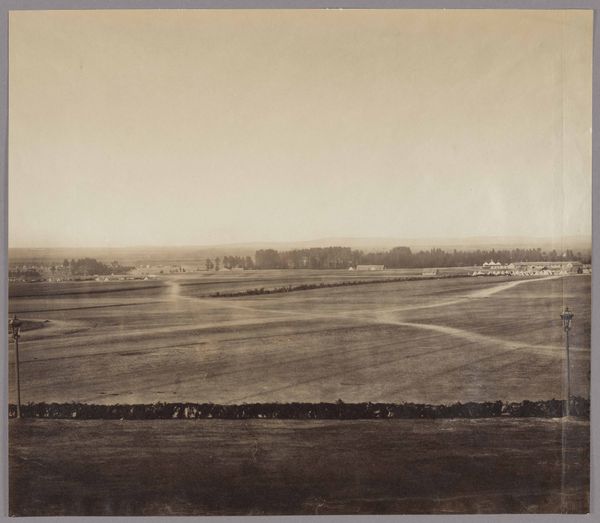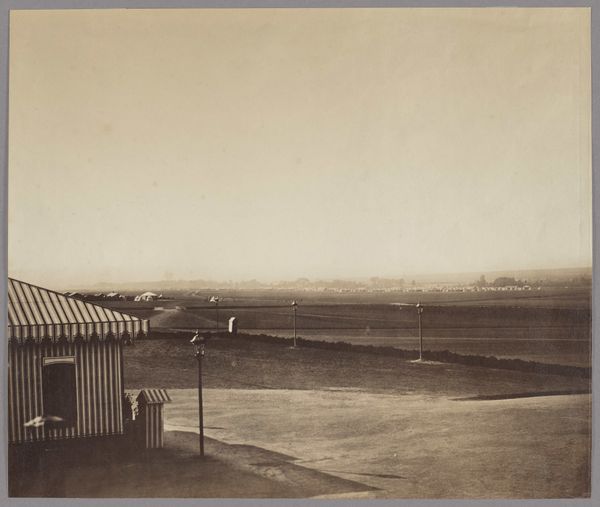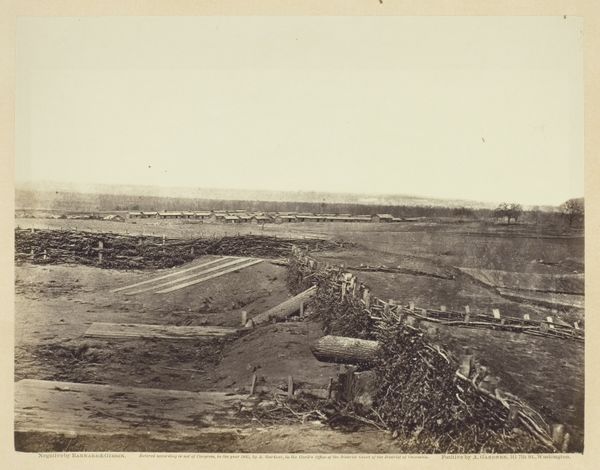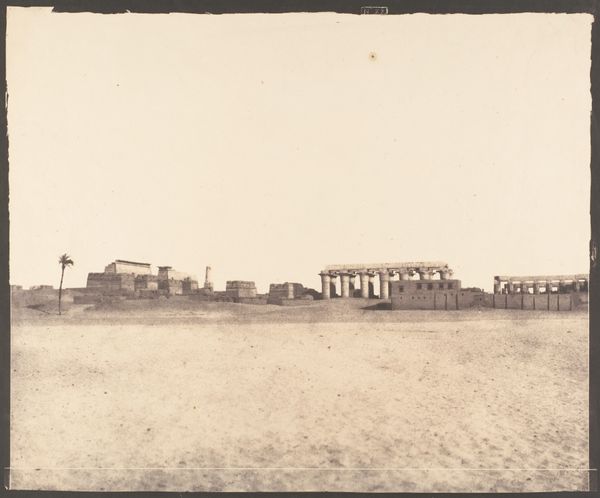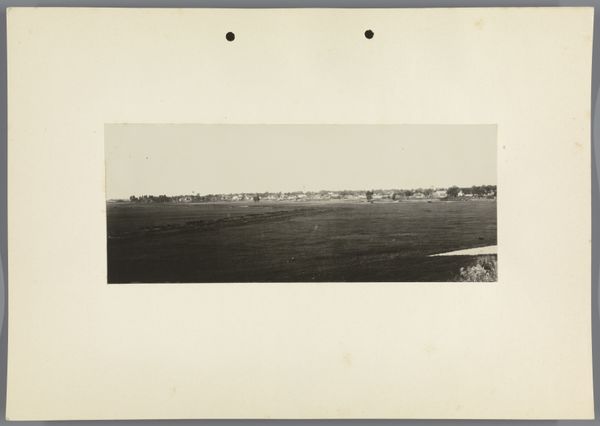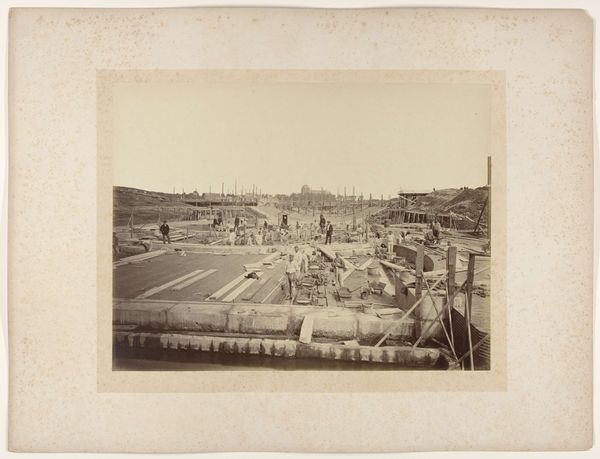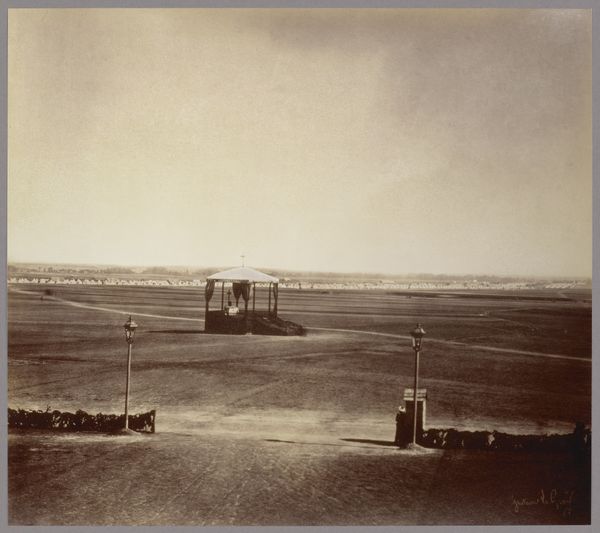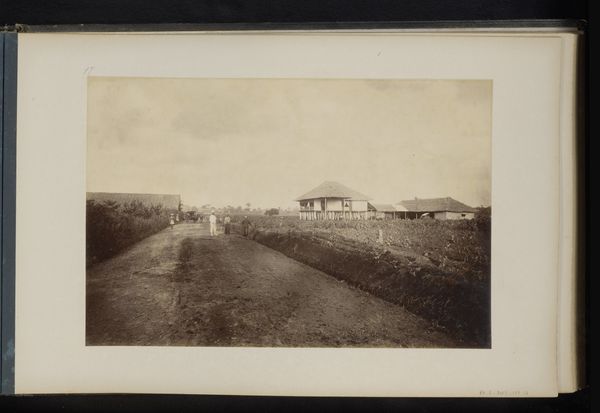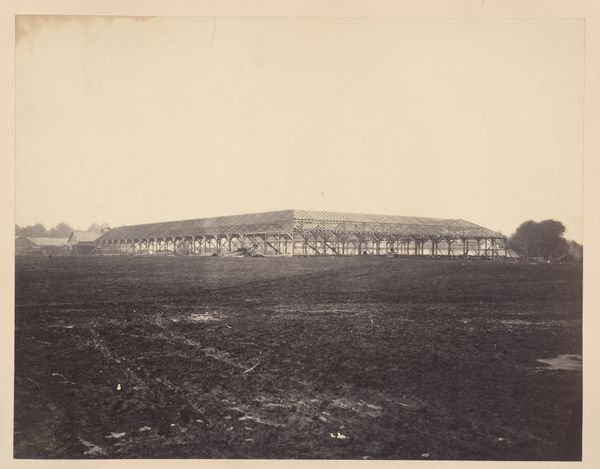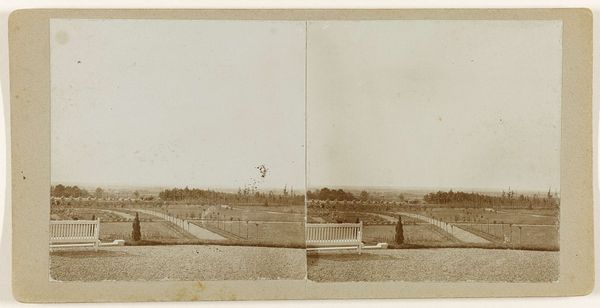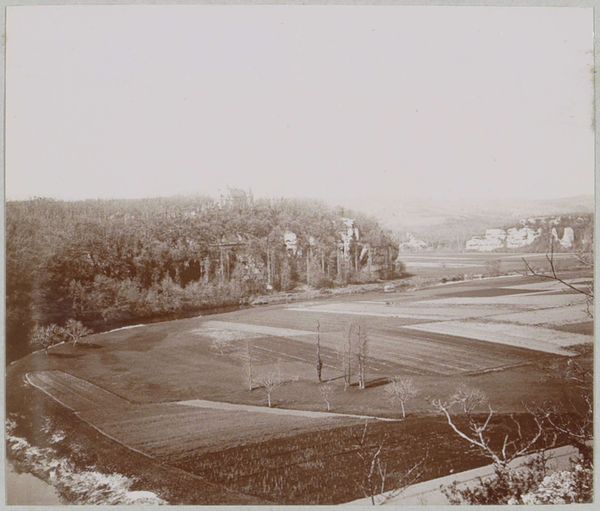
albumen-print, plein-air, paper, photography, albumen-print
#
albumen-print
#
16_19th-century
#
plein-air
#
landscape
#
paper
#
photography
#
france
#
albumen-print
#
realism
#
building
Dimensions: width_ 35.3 cm
Copyright: Public Domain
Curator: Looking at Gustave Le Gray's "The field of maneuvers in Châlons-sur-Marne," made in 1857 using the albumen print process, I find myself drawn to the vast expanse of the field and how it reflects the ambitious scope of French military power at the time. Editor: It strikes me as surprisingly muted. There's an undeniable stillness, a quietude, despite the implied presence of military activity. The composition almost divides into thirds—sky, open field, and that dark strip at the bottom. Curator: The stillness, I think, underscores the psychological impact of military readiness. The field, meticulously arranged with what seems to be rows upon rows of tents, speaks to order and control but also suggests a potent, latent force waiting for action. The image becomes a symbol for a nation holding its breath, prepared for conflict. Editor: And the way he's handled light and shadow is remarkable. Notice the gradations of tone, especially in the open field—how they create depth and a sense of vastness. It isn't a documentary image in the conventional sense. It has an almost painterly quality. Curator: Exactly. Le Gray, through his mastery of photography, captures a national spirit, perhaps even anxiety. The ordered rows of tents evoke societal regimentation while hinting at grander, symbolic narratives around national identity. Do you read any premonition of looming conflicts? Editor: Perhaps, the subdued tonality lends an air of solemnity that one could interpret as foreshadowing. Still, my immediate focus is drawn to the stark contrast between the light-filled field and the weighty mass at the very base. It really anchors the image. Curator: For me, the value of this work is not only historical but also aesthetic, representing an era's ambitions and tensions captured on a grand scale. It is about remembering and memorializing military might as well. Editor: Yes, its formal construction serves to amplify its impact. Thank you for offering such an insightful look. Curator: It was equally my pleasure, allowing a revisit into national psyche and ambition.
Comments
stadelmuseum about 2 years ago
⋮
Gustave Le Gray belonged to the circle of photographers, regularly commissioned by Napoleon III to document his prestige projects. Public manoeuvres and displays at the newly built military base at Châlons-sur-Marne northeast of Paris served the military self-representation of the Second Empire. For his panorama of the great exercise field, Le Gray required six individual shots, which he then carefully cut and assembled to achieve the impression of seamless continuity. His selection of detail with the central horizon line further emphasizes the ample space of the terrain.
Join the conversation
Join millions of artists and users on Artera today and experience the ultimate creative platform.
